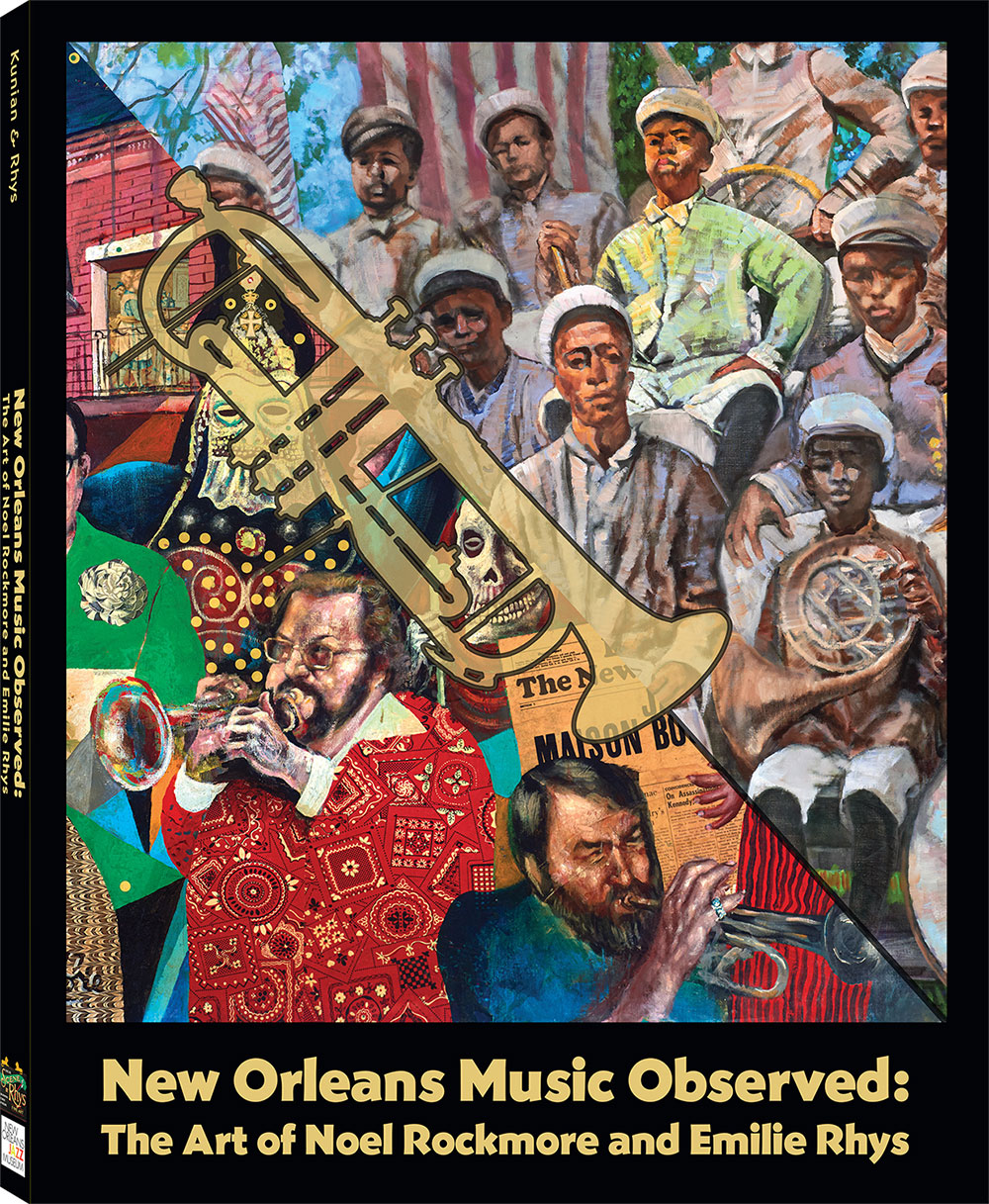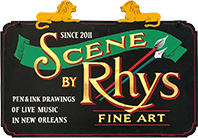Process
OIL PAINTINGS: Full-size or miniature in scale, all Rhys oils are distinguished by their richly-textured surface and by the complex layering of color and pattern, all to enhance the image created thereon. Most often, the artist spends quite a bit of time developing the surface of the canvas or copper sheet prior to beginning creation of an image on that surface.
PROCESS: Some canvases have the addition of tissue pasted on with acrylic gel medium in successive layers, providing a variable texture for the paint added later–some areas subtle, some with a prominent pattern. Figure 1 shows a canvas prepped with tissue paper, then a color ground.
Whether tissue is added or not, all have a color ground applied [Figure 2] in layers and is left to dry fully. [Figure 3]
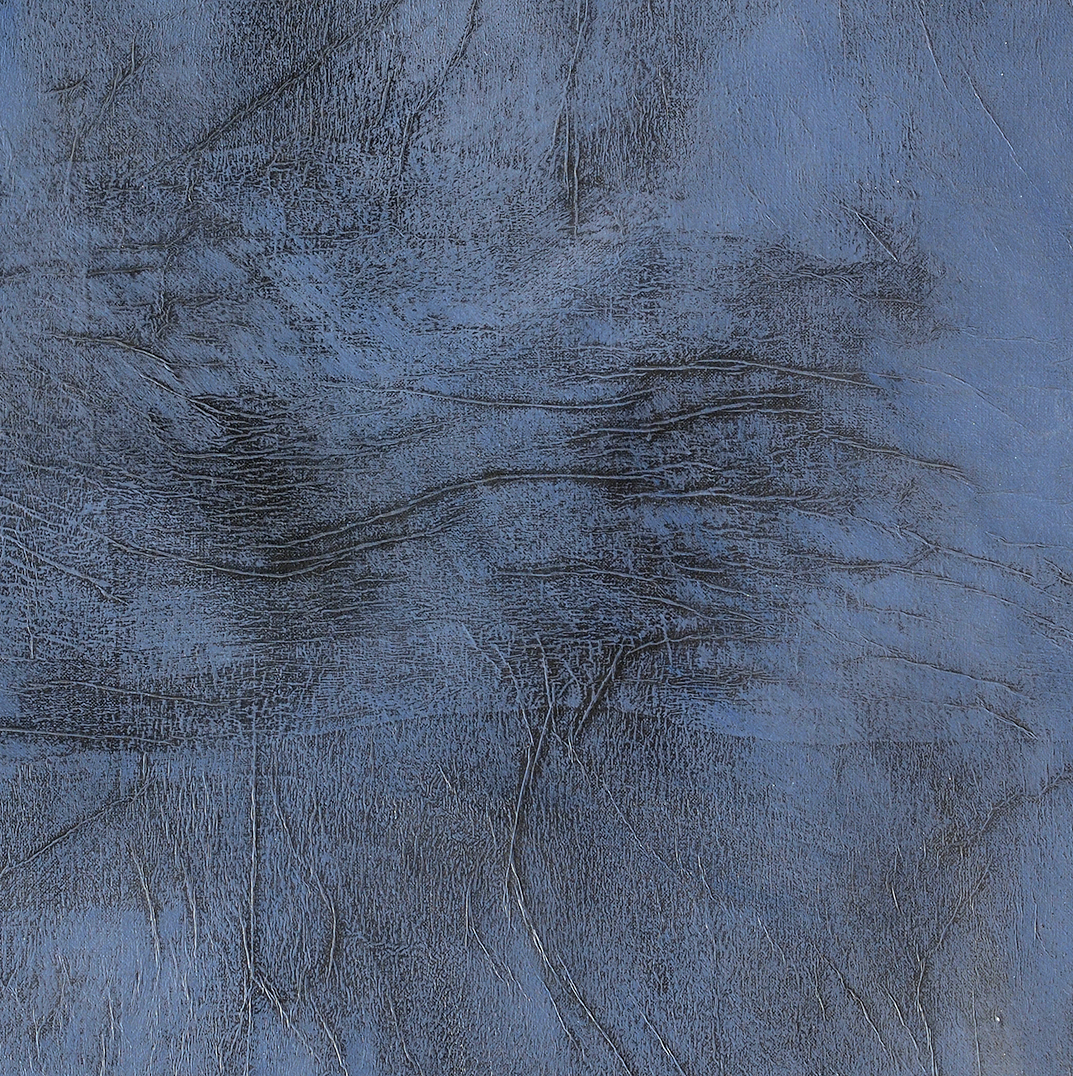
Figure 1

Figure 2

Figure 3
Next the artist applies a border of single 2-4” strips of bright color–typically Old Holland cadmium scarlet or Old Holland Scheveningen Blue–with a palette knife on one or more sides and immediately tips the canvas vertically and pours a mixture of turpentine and painting medium through it to get some of the color selectively to drip across the span of the canvas, often doing so from more than one edge to get a tangled web of drips.

Figure 1

Figure 2

Figure 3
This results in an oil on linen canvas (surfaced with tissue paper and brushed/scraped/poured oil ground) and now the artist is ready to start painting an image on it. She uses primarily Williamsburg oil paints, with some Old Holland, Chauvin, Vasari, and Holbein oil paints rounding out the palette.
Pen & Ink Process:
Each one starts out in a spiral-bound Aquabee sketchbook, either 11″x14″ with 60 pages or 14″17″ with 50 pages. [Figure 1] The paper is 93lb archival acid-free professional quality. Each book is consecutively numbered (i.e. Rhys NOLA Sketchbook #1 was begun in October 2011 and the most recent, #104, in February 2020). The work begins with an H-lead pencil, loosely exploring possible placement of subject on the page, and soon as Rhys is certain of where to begin solid development of the image, TWSBI fountain pens filled with Noodler’s ink are utilized soon after. [Figure 2]
Sometimes drawings call out for further development still, and sometimes colors are heard in the piece that must be added later on in the artist’s art studio where the colors of the ink already on the page blend with the added gouache colors in perfect serendipity.
A recent innovation–starting a few years ago–is the use of two consecutive pages at the same time to produce a double-page drawing. Rhys’s local framer joins the pages together and the artist fills in the missing lines to finalize the image.
Remember always that in homage to their inspiration, Rhys always shares cash commissions to musicians/bands depicted in the art. Their names are always written as part of the signature, as is the date and the venue. As such, there is a documentary aspect to this body of work–the capturing of a special time and place.

Figure 1

Figure 2
MUSIC INKED INTO ART: THE BODY OF WORK
By necessity, Ms. Rhys uses pen & ink on paper to create her live-action work in music venues and music festivals. The portability of sketchbooks are ideally suited to the task at hand.
All drawings are created from life as the music is being performed in the venues, festivals, or in the artist’s studio, and it is a point of pride to the artist that she does not utilize photography in creating these images unless some aspect of a commission requires it, i.e. depicting historical subjects.
Consequently, Ms. Rhys spends a lot of time in music venues, inspired by the brilliance of the music-makers to consign their image – and the environment in which they work – to art.
The driving force of it all is the music, and the “look of music”, i.e. the musicians, the venues, the instruments, the audience. All of this appears in this artist’s work.
What more heavenly toil could there be than to translate one art form into another? That is what Ms. Rhys does. The rhythm of the music makes its way onto the page. The unique posture that each musician has with their instrument is noted by Rhys.
Their names are always written as part of the signature, as is the date and the venue. As such, there is a documentary aspect to this body of work — the capturing of a special time and place.
And, in homage to their inspiration, she always remembers the musicians when artworks in which they are depicted are sold, in the form of cash commissions.
Each one starts out in a spiral-bound Aquabee sketchbook, either 11″x14″ with 60 pages or 14″ x 17″ with 50 pages. The paper is 93lb archival acid-free professional quality. Each book is consecutively numbered (i.e. Rhys NOLA Sketchbook #1 was begun in October 2011 and the most recent, #104, in February 2020).
EMILIE RHYS drawing fellow artist TOO LOOSE
Spotted Cat Music Club, November 16th 2011. Photo by Rita Posselt
The work begins with an H-lead pencil, loosely exploring possible placement of subject on the page, and soon as Rhys is certain of where to begin solid development of the image, TWSBI fountain pens filled with Noodler’s ink — walnut brown and navy blue (looks more like teal) are utilized soon after.
Sometimes drawings call out for further development still, and sometimes colors are heard in the piece that must be added later on in the artist’s art studio where the colors of the ink already on the page blend with the added gouache colors in perfect serendipity.
When a book is filled front to back with images, the spiral binding is removed and each page is professionally scanned and all details about each image are entered into our extensive database; then the pages are placed in presentation portfolios to protect them while they await perusal and eventual sale.
We invite you to pay us a visit in person at the gallery and flip through some of the books – an interesting random way to explore the music world of New Orleans, seen through the eyes of Rhys. Most drawings are sold unframed, packed in a Clear-Bag envelope with a stiff acid-free backing board, but a few are available framed by the artist and are on view at the gallery.
A recent innovation — starting a few years ago — is the use of two consecutive pages at the same time to produce a double-page drawing. Rhys’s local framer joins the pages together and the artist fills in the missing lines to finalize the image. In this way she now is filling sheets as large as 24″ x 36″!
Those require the use of a drafting table, which the artist has done numerous times in the courtyard of the art gallery at 708 Toulouse, hiring musicians to fill the air with music and provide her with visuals.
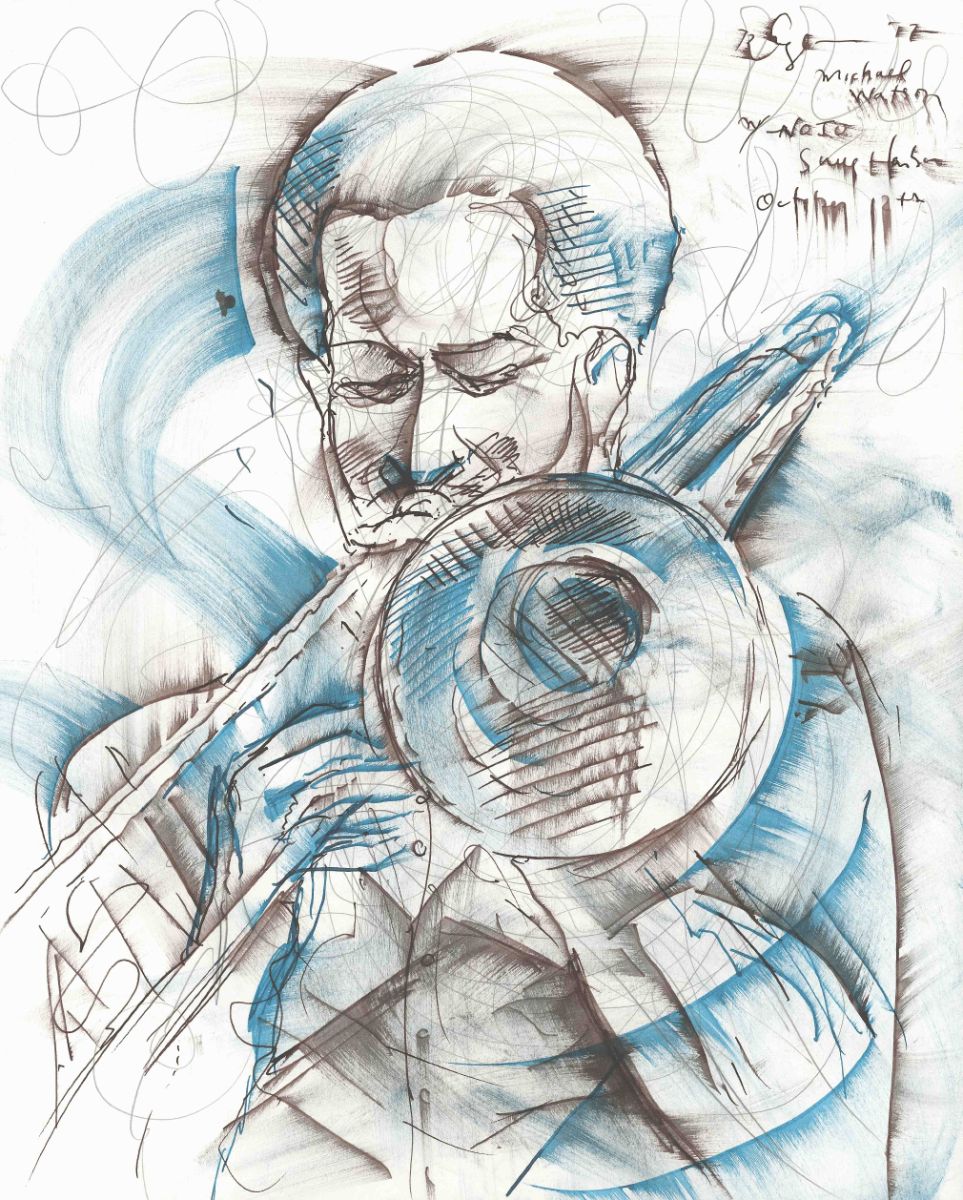
Michael Watson at Snug Harbor 2017
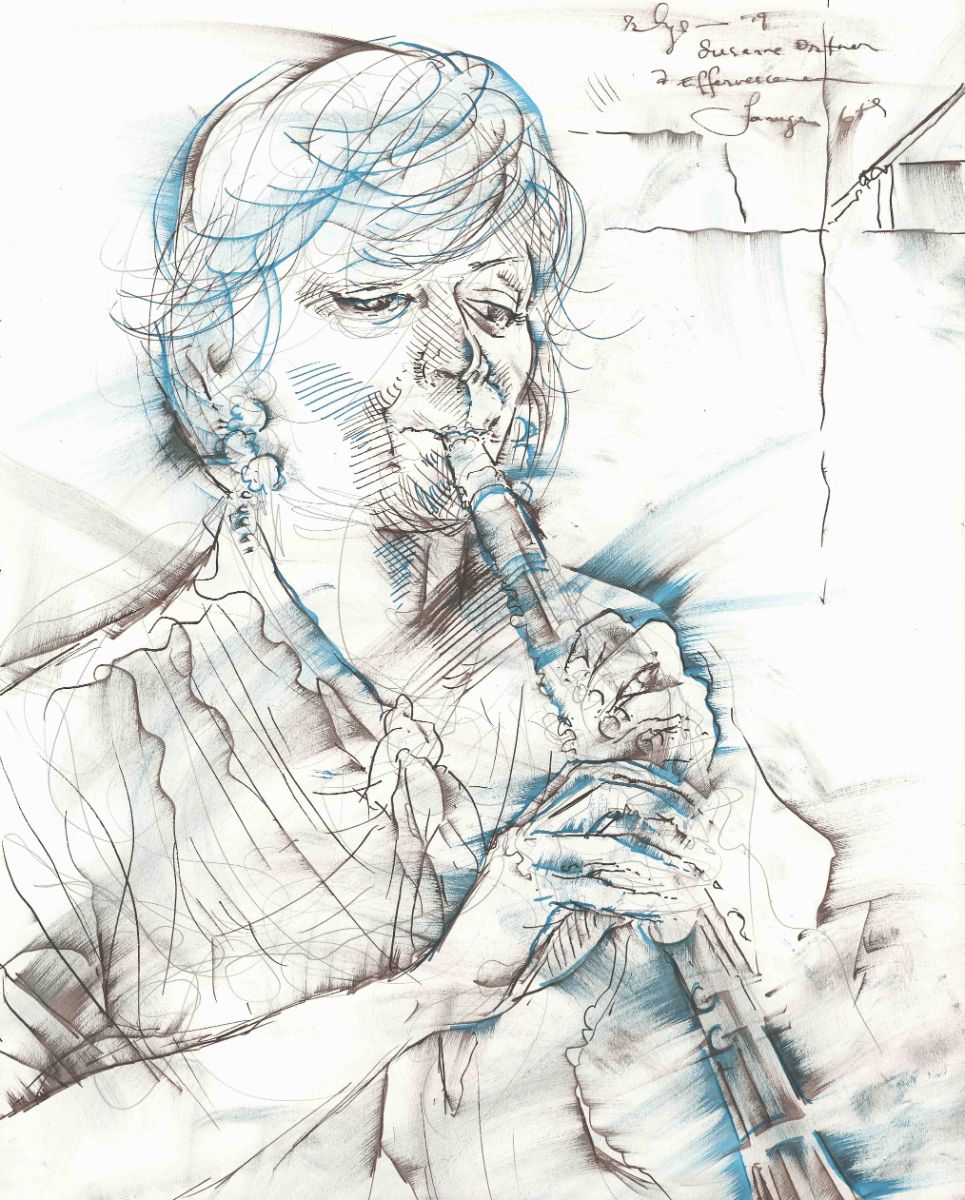
Susanne Ortner at Effervescence 2019
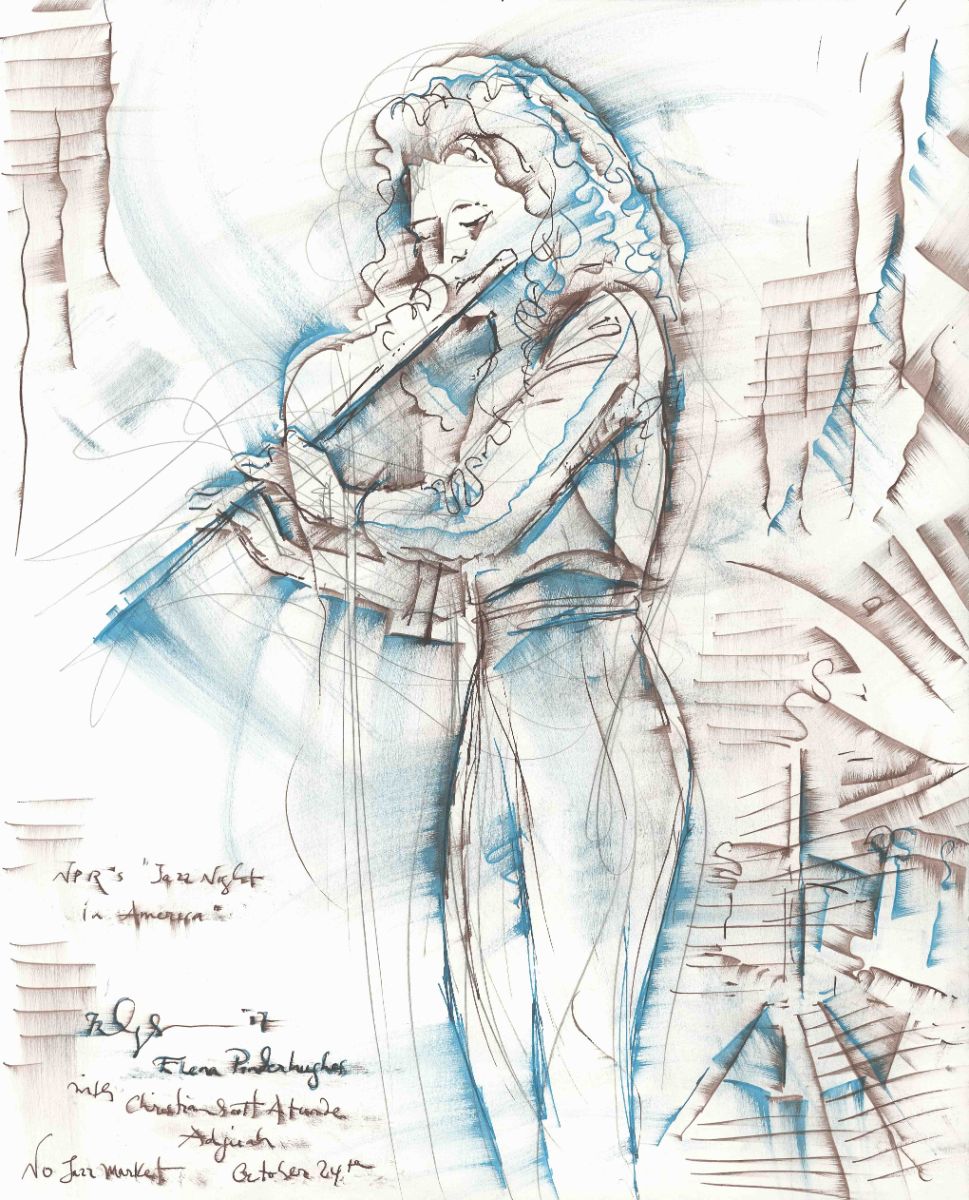
Elena Pinderhughes, Jazz Market 2017
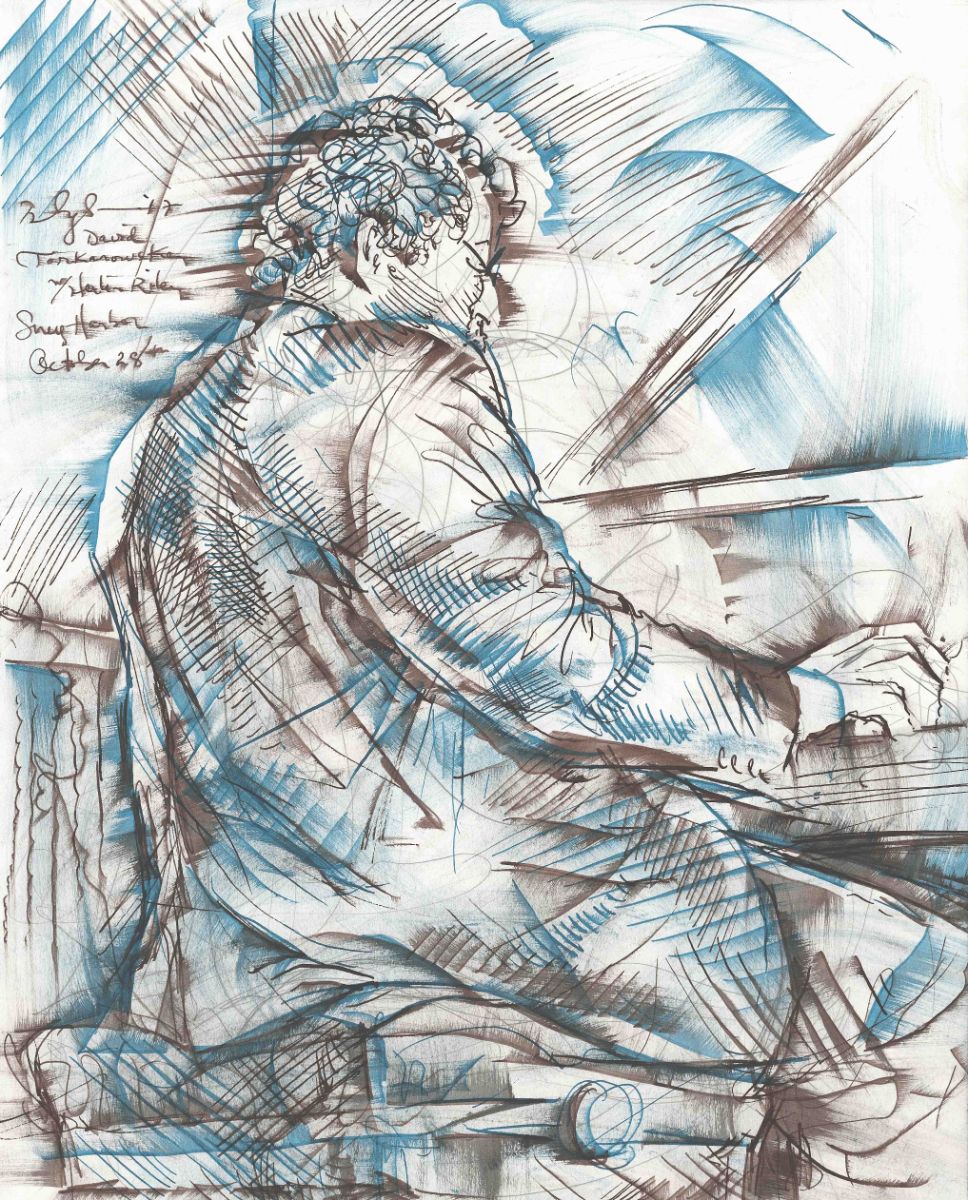
David Torkanowski at Snug Harbor 2017
Header Here
All four time-lapse videos were filmed one winter afternoon in 2018, showing Ms. Rhys’s hand creating an 18″ x 24″ drawing of a jazz quartet performing live in the gallery courtyard. From left to right are George Aschmann on fiddle, Greg Sherman on guitar, Norbert Susemihl on trumpet and James Evans on Clarinet.
"New Orleans Music Observed," published in 2021 by Emilie Rhys
